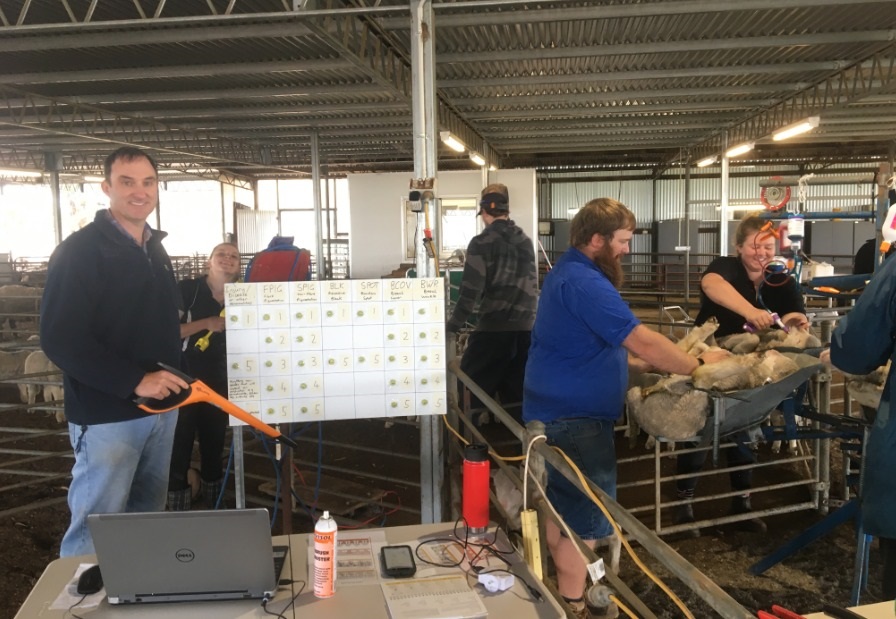
DPIRD research scientist John Paul Collins, left, and his colleagues collect lamb measurements at the Katanning Research Facility for Yardstick.
THE world’s longest running genetic benchmark program – Western Australia’s sheep sire evaluation project Yardstick – is celebrating its 20th year of operation in the state.
The long running national sheep sire evaluation project, Yardstick, started in 1989 and has been hosted by the Department of Primary Industries and Regional Development, in association with the Western Australian Federation of Performance Sheep Breeders, administered by consultants Icon Agriculture.
It has been co-funded by Australian Wool Innovation and the Australian Merino Sire Evaluation Association to compare and benchmark the progeny of rams from around WA.
Principal investigator and department research scientist John Paul Collins, said Yardstick had evolved over the past two decades, reflecting the changes in the sheep industry.
“When Yardstick started it was very much about improving wool traits, like clean fleece weight, micron and tensile strength,” Mr Collins said.
“Then as industry needs evolved, there was increased interest in worm resistance, meat traits, like eye muscle depth and growth rates, while also improving the wool traits, to breed a more, dual purpose sheep.
“More recently, there has been growing interest in the easy care traits, like breech wrinkle, as more sheep producers are looking to breed sheep that require less labour input and create a more manageable sheep enterprise,” he said.
The department hosts the trial at its Katanning Research Facility, which has the facilities, technology and staff with expertise to measure and collect the extensive data required for the project.
The team recently completed its measurements on the 2020 drop of lambs and has uploaded the data for AMSEA to process, which will be available in coming weeks.
A total of 14 Merino rams are currently participating in the project, comprising 11 local contributions and three link sires, which are used at each site across Australia. Data has been collected from 622 lambs, which were recently marked from 520 ewes.
More than 30 measurements are taken from birth to hogget stage, including regular weights, eye muscle and fat depth, wool measurements, fleece weight and scoring for a range of easy care and conformation traits.
DPIRD said with the ram sale season well underway, prospective buyers can access the 2019 data on the Merino Superior Sires website to make informed decisions about what offering best meets their breeding objectives.
The Yardstick data set includes Australian Sheep Breeding Values, as well as Flock Breeding Values, which describes the in-flock performance of sheep for different traits.
Mr Collins said Yardstick had proven to be a valuable tool to help sheep producers use objective measurement, alongside visual assessment, to continually improve the genetic merit of their flock.
“Objective measurement has become accepted as a powerful means to achieve breeding objectives through genetic selection and improve the performance of the overall flock,” he said.
“Our staff are proud to be a part of this important project and the opportunity to liaise directly
with producers, who actively use the information in refining their own flock’s breeding objective.”
A field day to view the 2019 progeny in full wool prior to their hogget shearing and to discuss the latest Yardstick data will be held on Tuesday, 27 October at the Katanning Research Facility from 1pm – 4.30pm.
For information and to register email [email protected].

HAVE YOUR SAY